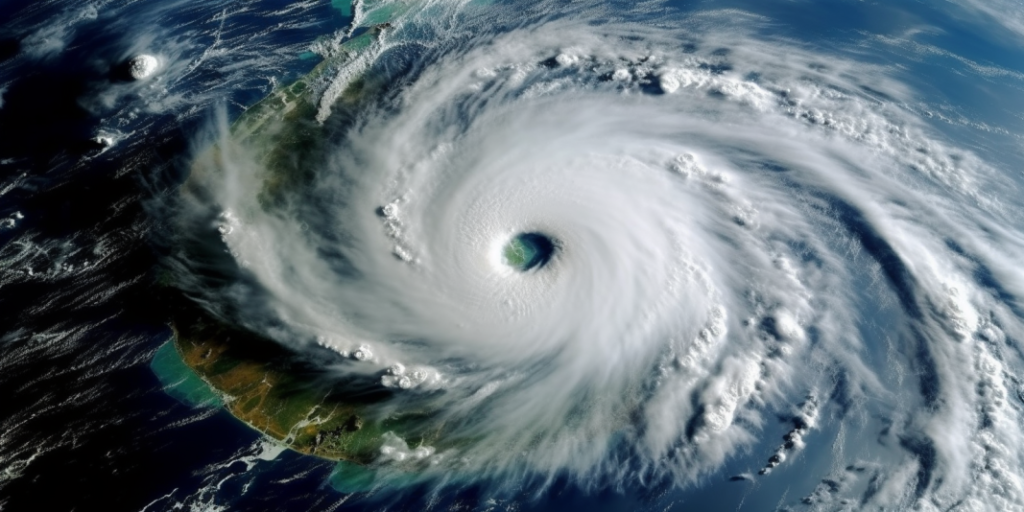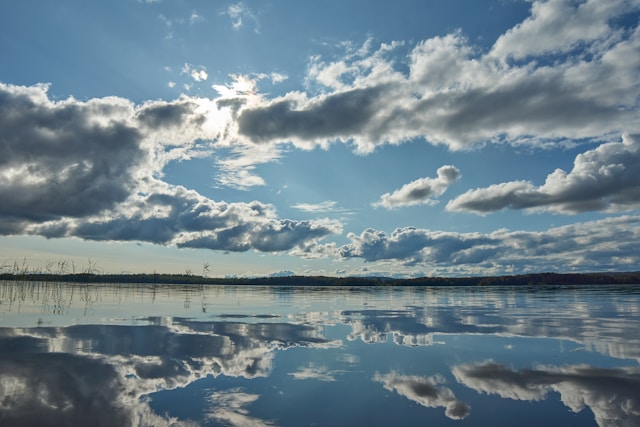Weather phenomena encompass a multitude of natural occurrences that constantly surround us, ranging from the ordinary to the breathtaking. Whether it be a gentle gust of wind or a ferocious tornado, these captivating events intrigue us. In this enlightening piece, we will delve into diverse categories of weather phenomena, examining their origins, consequences, and profound implications.
The Science Behind Weather
To grasp the intricacies of weather phenomena, it is imperative to comprehend the fundamental principles that govern the Earth’s atmosphere.
Heat Transfer
Heat transfer plays a pivotal role in the Earth’s climate system, especially in the distribution of solar energy from the Sun to the Earth’s surface. Sunlight, composed of electromagnetic radiation, serves as the primary source of heat energy for our planet. When sunlight reaches the Earth’s atmosphere, it undergoes a series of processes that ultimately lead to uneven heating of the Earth’s surface. This uneven heating gives rise to temperature disparities, which, in turn, drive various atmospheric phenomena like wind and weather patterns.
To comprehend the mechanisms of heat transfer, it is crucial to delve into the distinct processes involved in transferring heat energy from the Sun to the Earth’s surface:
| Process | Description |
|---|---|
| Solar Radiation | The Sun emits solar radiation, which consists of ultraviolet (UV), visible light, and infrared (IR) radiation. It travels through space and reaches the Earth’s atmosphere. |
| Absorption | When solar radiation reaches the Earth’s atmosphere, gases, aerosols, and clouds absorb a portion of it. Different components of the atmosphere absorb specific wavelengths. |
| Scattering | Particles in the atmosphere, such as molecules, aerosols, and dust, cause some solar radiation to undergo scattering. Scattering redirects radiation in various directions. |
| Reflection | The Earth’s surface, clouds, and other atmospheric constituents reflect a portion of incoming solar radiation. This reflection, known as the albedo effect, varies by surface. |
| Transmission | Solar radiation that is not absorbed, scattered, or reflected reaches the Earth’s surface. It interacts with materials such as land, water, and vegetation. |
| Absorption and Conduction | Once solar radiation reaches the Earth’s surface, it is absorbed by land, water bodies, and vegetation, leading to an increase in surface temperature. The absorbed heat is then conducted through the material. |
| Convection | Uneven heating of the Earth’s surface causes temperature differences in the air above. Warm air rises, creating convection currents that redistribute heat vertically in the atmosphere. |
| Advection | The horizontal movement of air, called advection, also contributes to heat transfer. Air masses with different temperatures and properties move and interact, influencing weather patterns. |
| Radiation | Heat energy is transferred through radiation, which is the emission of electromagnetic waves. The Earth’s surface emits longwave infrared radiation, maintaining the energy balance. |
Water Cycle
The water cycle, also known as the hydrological cycle, is a continuous process that involves the movement of water between the Earth’s surface, atmosphere, and back again. This cycle plays a crucial role in distributing water resources, regulating weather patterns, and sustaining life on our planet. Let’s explore the different stages and processes of the water cycle in detail:
| Stage | Description |
|---|---|
| Evaporation | Heat energy causes water on the Earth’s surface and from plants to vaporize into water vapor. |
| Condensation | Water vapor cools and condenses into liquid water droplets, forming clouds. |
| Precipitation | Water droplets in clouds become heavy and fall back to the Earth’s surface as rain, snow, or hail. |
| Runoff | Precipitated water flows over the land, collecting in streams and rivers, eventually reaching oceans. |
| Transpiration | Plants absorb water from the soil, releasing excess moisture into the atmosphere through transpiration. |
Pressure Systems
Atmospheric pressure plays a significant role in the dynamics of our weather systems. Variations in pressure across different regions give rise to wind patterns and influence weather conditions. There are two primary pressure systems: low-pressure systems and high-pressure systems. Let’s delve into each system’s characteristics and their impact on weather patterns:
Low-Pressure Systems
- Low-pressure systems are characterized by atmospheric pressure that is lower than the surrounding areas. They are often associated with stormy weather conditions;
- These systems occur when air near the Earth’s surface rises and creates a region of lower pressure. As the air rises, it cools, leading to the condensation of moisture and the formation of clouds;
- Low-pressure systems are typically associated with the upward motion of air, which creates convergence at the surface. This convergence leads to the formation of unstable atmospheric conditions, including thunderstorms, heavy rainfall, and sometimes severe weather events such as hurricanes or cyclones;
- The counterclockwise rotation of air in the Northern Hemisphere and clockwise rotation in the Southern Hemisphere is a characteristic feature of low-pressure systems.
High-Pressure Systems
- High-pressure systems are characterized by atmospheric pressure that is higher than the surrounding areas. They generally bring fair and stable weather conditions;
- These systems occur when air near the Earth’s surface sinks and creates a region of higher pressure. As the air descends, it warms and inhibits the formation of clouds;
- High-pressure systems are associated with subsidence, which leads to the suppression of vertical air motion. This subsidence results in stable atmospheric conditions, clear skies, and reduced chances of precipitation;
- High-pressure systems exhibit clockwise rotation in the Northern Hemisphere and counterclockwise rotation in the Southern Hemisphere.
The interaction between low-pressure systems and high-pressure systems is vital in determining weather patterns across regions. These pressure systems, along with other atmospheric factors, drive the movement of air masses, the formation of weather fronts, and the distribution of moisture and temperature. The resulting atmospheric circulation patterns contribute to the formation of weather phenomena such as hurricanes, tornadoes, and the general day-to-day weather we experience.
Coriolis Effect
The Coriolis effect is a phenomenon that occurs due to the rotation of the Earth. It causes the deflection or apparent bending of moving objects, such as wind and ocean currents, as they travel across the Earth’s surface. The Coriolis effect has a significant influence on wind direction and plays a crucial role in shaping weather patterns, particularly on large scales. Here’s a detailed explanation of the Coriolis effect and its impact:
| Category | Description |
|---|---|
| Rotation of the Earth | The Earth spins on its axis from west to east, resulting in varying linear velocities across its surface. Linear velocity is highest at the equator and decreases as one moves towards the poles. |
| Coriolis Effect | This is the deflection of the path of an object moving across the Earth’s surface. In the Northern Hemisphere, objects deflect to the right, and in the Southern Hemisphere, they deflect to the left. The deflection depends on the object’s speed, distance traveled, and latitude. |
| Influence on Wind Direction | The Coriolis effect alters the direction of wind globally. It deflects air moving from high to low pressure areas, resulting in a clockwise rotation around high pressure areas and a counterclockwise rotation around low pressure areas in the Northern Hemisphere. The pattern is reversed in the Southern Hemisphere. |
| Impact on Weather Patterns | The Coriolis effect shapes the formation and movement of weather systems, including the structure and movement of high and low-pressure systems. It affects weather fronts, the formation and behavior of global wind belts, and contributes to the development of ocean currents. |
Key Weather Phenomena

Weather phenomena occur in various forms, from atmospheric conditions like rain and snow to severe weather events like hurricanes and tornadoes.
Rain
Rain is the most common form of precipitation, resulting from the condensation of water vapor in the atmosphere.
| Mechanism | Occurrence | Effect |
|---|---|---|
| Cool air cannot hold as much water vapor as warm air, so when warm, moist air cools, the excess water vapor condenses into droplets that form clouds. If the droplets combine and grow large enough, they fall as rain. | Globally, most often in tropical and temperate regions. | Essential for plant life and most ecosystems, though excessive rain can cause flooding. |
Snow
Snow forms when atmospheric water vapor freezes into ice crystals. These crystals then aggregate to form snowflakes, which fall to the ground when heavy enough.
| Mechanism | Occurrence | Effect |
|---|---|---|
| Similar to rain, but occurs when temperatures are below the freezing point. | Typically in polar and temperate regions, especially in winter. | Crucial for certain ecosystems, can cause traffic disruptions and is important for winter sports. |
Tornadoes
Tornadoes are rapidly rotating columns of air that are in contact with both the surface of the Earth and a cumulonimbus cloud.
| Mechanism | Occurrence | Effect |
|---|---|---|
| Tornadoes form from severe thunderstorms in a wind environment that can force air to rotate. | Most common in the U.S., especially in the Midwest and South, but can occur anywhere. | Can cause significant damage and loss of life. |
Hurricanes
Hurricanes, also known as cyclones or typhoons, are large storm systems characterized by a low-pressure center surrounded by a spiral arrangement of thunderstorms.
| Mechanism | Occurrence | Effect |
|---|---|---|
| Form over warm ocean waters. The warm, moist air rises, creating an area of low pressure beneath. This process continues, creating a cyclone. | In tropical regions, especially the Atlantic and Pacific Oceans. | Can cause massive damage through strong winds, heavy rain, and storm surges. |
Conclusion
Weather phenomena, driven by the complex interplay of atmospheric conditions, play a crucial role in our daily lives and the Earth’s ecosystems. Understanding these phenomena is not only fascinating but also essential in mitigating weather-related risks and adapting to our changing climate.
FAQs
Lightning occurs when there’s a buildup of electrical energy in a storm cloud. This energy discharges, creating a bright flash we see as lightning. Thunder is the sound made by the rapid expansion and contraction of air surrounding the lightning bolt.
Clouds form when water vapor condenses into droplets in the Earth’s atmosphere. The type of cloud depends on the altitude, temperature, and humidity conditions at which this condensation occurs.
Yes, human activities can influence weather. For instance, urban development can affect local weather patterns. On a larger scale, human-induced climate change is causing more intense and frequent extreme weather events.
Meteorologists use sophisticated computer models that simulate the Earth’s atmosphere and oceans to predict weather. These models take into account various factors like temperature, humidity, wind speed and direction, and atmospheric pressure.
This depends on context. Hurricanes, tornadoes, and severe storms can cause widespread destruction. Heatwaves, though not often thought of as severe weather, kill more people in the U.S. each year than other weather phenomena, according to the Centers for Disease Control and Prevention.


